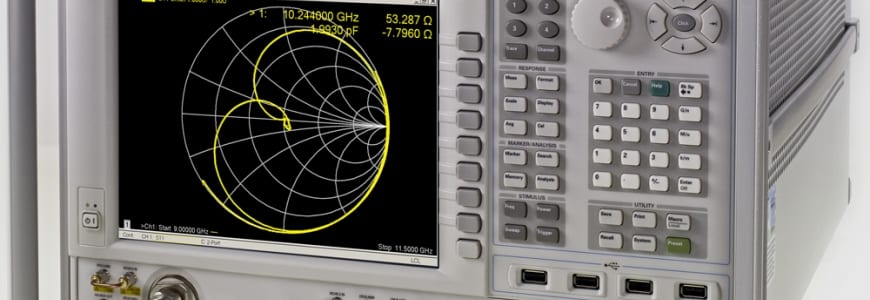By Rob Mitchum // October 1, 2013
Science is built on measurement, but measurement has never been so complicated. Devices built for chemistry, physics, biology and other disciplines no longer merely collect data, but also conduct the initial rounds of analysis on that information. As more and more fields deal with the challenge of finding meaningful signals within enormous datasets, the ability of these scientific devices to help sort through the data they gather becomes ever more important.
A new collaboration between the research group of Computation Institute Senior Fellow Andrew A. Chien and measurement company Agilent Technologies will attack this problem by accelerating a fundamental data task: pattern matching.
As a technology leader in chemical analysis, life sciences, diagnostics, electronics and communications, Agilent products – such as oscilloscopes, mass spectrometers and DNA microarray scanners – all contain embedded computers that use pattern matching for analyzing the data they collect. Agilent is researching new computer architectures that execute those functions more quickly while remaining optimally energy efficient.
“Many of our instruments are essentially embedded computing devices, so we already have limits on the amount of power we can draw. Because of their size we can only put so much electricity into them and only get so much heat away from them,” said Andrew Lehane, a scientist in Agilent’s Measurement Research Laboratory. “Everyone thinks of high-performance computing as supercomputers, but there’s also high performance computing in real-time embedded devices, which is where this work fits.”
Instead of designing different customized chips for each instrument, Agilent would like to create a generalized pattern-matching “accelerator” that could be used in multiple devices that share this analytic need. To assist in this effort, Agilent researchers Lehane, Colin Arthur and Tony Kirkham connected with Chien’s 10×10 project, a DARPA-funded research effort to design new computer architectures that are ten times faster using a tenth of the energy.
Most computer chips are designed to be general purpose, performing small steps that can be used for an enormous range of responsibilities. It’s more efficient, however, to design hardware “accelerators” that are optimized for particular, energy-hungry tasks, such as the media decoder that plays video on a smartphone. The goal of 10×10 is to create and package a new class of accelerators that perform specialized tasks, such as pattern matching, without losing the broad applicability of a standard computer chip.
“The tension is to get the energy efficiency of the customized accelerator and still be general purpose,” said Chien, William Eckhardt Professor of Computer Science at the University of Chicago and Senior Computer Scientist at Argonne National Laboratory. “Pattern matching seems to be a fundamental technology for sifting the wheat out of the chaff. This notion of matching is central to processing all sorts of large amounts of data.”
A DNA sequencer with a pattern matching accelerator, for example, could automatically test DNA samples against massive databases of gene sequences associated with disease susceptibility. This information would give the doctor and patient a rapid genetic assessment to inform decisions about treatment or prevention. A pattern-matching accelerator could also open up new opportunities for instrumentation, such as sensors that constantly collect data from the surrounding environment and use pattern matching to flag only important events for a researcher to analyze more deeply.
“Our hope is that we can find a new architectural organization or several that can provide new capabilities to pattern match at a much higher speed, with much more energy efficiency and across multiple domains,” Chien said. “Our plan is to produce a compelling demonstration to advance technology in the computer industry.”
Though the collaboration is only in its early stages, both parties were excited about the potential of an academic-industry partnership to reveal new solutions to tough challenges.
“Broad-reaching problems like this benefit from collaboration,” Lehane said, “and university collaborations provide new viewpoints and expertise.”
The opportunity for University of Chicago undergraduate and graduate students to work on real-world, relevant problems is also a valuable educational experience, Chien said.
“I think this kind of project helps our students to understand what academics can do that industry can’t do, and what industry can do that academics can’t do,” Chien said. “The challenging, technical, intellectual problems, the understanding of what kinds of solutions can make it into volume, the exposure to senior scientists and mature mentors in different kinds of roles than academic faculty, the exposure to collaboration. Those are all big aspects.”

